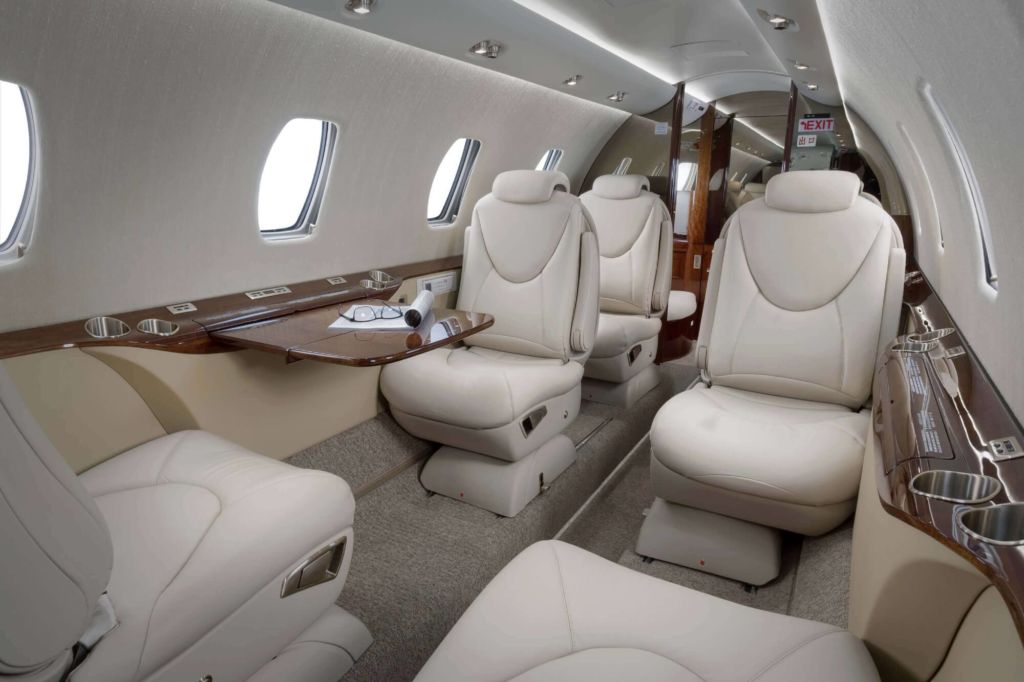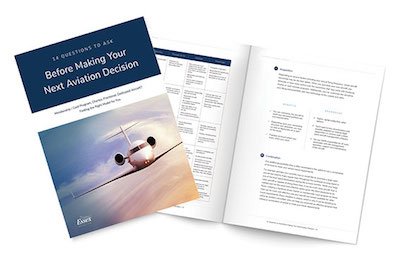
Wouldn’t it be great to be able to just rent a jet? Well, with private jet charter services, you can.
Private aircraft charter is an on-demand service that enables passengers to select the aircraft model that most closely meets their travel needs and book a flight in much the same way they’d book a seat on a commercial flight.
Read on to explore private aircraft charter options, expenses, safety considerations and more.
Different Types of Private Jet Charter Services
Private jet charter services typically fall into one of two broad categories: private jets for business and private jets for leisure.
Private aircraft charter is an attractive option to businesses because it enables them to:
- Arrange flights to multiple cities within a single day according to your schedule, rather than a commercial airline’s
- Bypass long check-in and security lines by boarding through private terminals
- Arrive on-time to important meetings by flying to an airport closer to their final destination
- Access airports often having less ground and air traffic, thereby reducing the potential for delays
- Transport larger groups at a potentially lower overall cost than commercial airfare
- Avoid costly downtime associated with commercial flight delays, layovers and connecting flights
- Support in-flight productivity by eliminating unnecessary distractions and increasing overall travel efficiency
- Conduct onboard business meetings without having to worry about other passengers listening in on sensitive conversations
- Enable team members to travel in a comfortable, inviting atmosphere so that they arrive to their final destination refreshed and prepared
Private air charter is similarly appealing to those who fly primarily for leisure purposes. Private aviation enables such individuals to effectively extend their holiday experience by flying aboard aircraft appointed with the finest luxury amenities, including full-service kitchens, state-of-the-art in-flight entertainment systems and dedicated bedrooms. Private terminals at commercial airports offer a secure, comfortable and relaxed environment, far from the hustle and bustle of the main commercial airport concourse. Local, non-commercially serviced airports enable travelers to arrive closer to their final destination, so they can start their holiday that much sooner. Ultimately, private jet charter can make even the longest haul flight feel like an escape.
Private Aircraft Charter Amenities
We’ve already touched upon some of the amenities that travelers can expect when they charter a private jet aircraft, but let’s take a closer look at some of the comforts and conveniences passengers enjoy while onboard:
- Open spaces designed with legroom, storage space and aesthetics in mind
- Private lounges featuring plush seating arrangements upholstered with high-end materials
- Personal flight attendant crew members ready to tend to each individual passenger’s needs
- Full-service galleys stocked with a variety of fine foods and beverages
- In-flight food and drink services, including meal catering or onboard personal chef services
- State-of-the-art in-flight entertainment systems featuring cutting-edge audio and visual equipment
- Full-size lavatories, including mirrors, storage and, depending on the aircraft, shower facilities
- Depending on the aircraft, dedicated bedrooms replete with full master suite
- Private conference rooms fitted with built-in video systems, surround sound and Wi-Fi access
- Special accommodations for passengers who wish to fly with pets
Every aspect of the private jet charter experience is designed to accommodate the passenger’s unique needs.
When Does It Makes Sense to Rent a Jet?
Private jet charter services have long been popular amongst travelers who want the experience of private aviation without the long-term commitment associated with dedicated or fractional aircraft ownership. It’s an especially practical option for those who are dealing with a smaller number of trips, or who require flexibility in terms of aircraft size and destination. Interest in private aircraft charter has also increased significantly in light of COVID-19, as travelers seek to find safer alternatives to commercial flights. Travelers who are curious about the prospect of chartering a private aircraft but unsure whether it makes the most sense based on their needs are encouraged to discuss their operations with a private aviation consultant.
How Much Does It Cost to Charter an Airplane?
Unfortunately, there is no one simple answer to this question — the expense of chartering a private aircraft varies substantially based on a number of factors:
- Number of Passengers: This dictates the size of the aircraft (light jet, midsize jet, long range or ultra-long range) and, therefore, available aircraft models from which to choose.
- Dates of Travel and Scheduling: If you primarily charter on holidays and during peak travel times, this can affect your cost. General limited availability and the location of available aircraft can also affect your ability to travel on your desired dates, so it’s best practice to book charter flights as far in advance as possible.
- Flight Route and Destination: More distant destinations with longer flight routes require long range or ultra-long range aircraft models; longer journeys may also require stops to refuel and change crew if required per the Federal Aviation Administration’s (FAA) Pilot Fatigue Rules.
- Length of Time on the Ground: Most private jet charter service providers require an equivalent of two hours per day of flight time. That said, it does not matter how this time is spread out. For example, if a traveler were to depart on a four day trip, they would be required to fly a minimum of eight hours during that trip; however, they could divvy this up by flying two hours each day of the trip, or four hours each during the first and last days of the trip with the aircraft parked during days two and three.
- Round-trip vs. One-way: Round-trip flights are generally more cost effective than one-way trips. The reason for this is that a one-way trip typically requires the aircraft to complete additional flights in order to support a one-way trip request. As a result, most charter providers will actually quote the cost of a round-trip flight, even for a one-way trip. Charter providers that quote a one-way trip will effectively quote, in some form or another, the cost for the flight time of repositioning the aircraft back to its home base. For travelers interested in booking either a one-way or round-trip flight, a private aviation consultant is an invaluable resource because they can help you better understand pricing.
- One-way Options: Although it’s certainly possible to request a one-way trip, from a traditional charter perspective, the cost will likely compare to the cost of a round-trip flight. Therefore, travelers who frequently make one-way trips would probably be best served by looking into a jet card program as opposed to chartering because jet cards tend to cater more to one-way requirements.
That said, some charter providers offer one-way options in which the traveler can take advantage of a positioning flight (that has no passengers) required by another client’s scheduled trip. These opportunities utilize what are referred to as “deadhead flights,” while positioning the aircraft to its primary departure point or returning it to its home base at the end of a primary charter trip. Should your travel needs coincide with a deadhead flight — also known as an “empty leg flight” — this can be a good option, one that is often offered at a discounted rate. It’s important to note, though, that the cost savings associated with deadhead flights pose risks in terms of flexibility because these flights have a predetermined departure date, time and schedule, all based on the schedule — and sometimes changing needs — of the primary charter customer.
On the whole, private jet charter services are less expensive than most other private aviation options because they’re booked on a trip-by-trip basis with no ongoing ownership or program costs.
For private jet charter cost estimates, please refer to the chart below:
| Aircraft Category | Popular Model | Seating Capacity | Approx. Range (Nautical Miles) | Est. Cost per Hour |
| Turboprop | Pilatus PC-12 | 9 passengers | 1,514 nm. | $2,500 |
| Very Light Jet | Cessna Citation Mustang | 5 passengers | 1,167 nm. | $2,800 |
| Light Jet | Embraer Phenom 300 | 7 passengers | 1,971 nm. | $3,400 |
| Midsize Jet | Learjet 60 | 10 passengers | 2,405 nm. | $3,800 |
| Heavy Jet | Bombardier Global 6000 | 13 passengers | 6,150 nm. | $7,500 |
Charter Operators vs. Charter Brokers
There are a few different ways to charter a private jet aircraft, including working directly with a charter operator or going through a charter broker.
Charter operators are FAA Part 135 Certified Air Carriers who are directly responsible for the ongoing management and operation of the aircraft on their charter certificate, including staffing, and require FAA certification. Charter brokers are third-party agents that act as liaisons between a client and the FAA Part 135 charter operator chosen to be utilized for the trip. A charter broker will work with their client to secure representation for the booking of the trip and then work with different charter operators to determine which option they believe best meets the trip requirements.
It’s important to note that, unlike Part 135 charter operators, charter brokers are not required to be FAA certified and operate with limited regulatory oversight. That isn’t to say that there aren’t reputable brokers in the market, rather that it’s important to thoroughly vet brokers before choosing to partner with one; a private aviation consultant can prove to be a valuable asset in this review and selection process.
For a more detailed explanation of the difference between charter operators and charter brokers, please refer to our blog post on the subject.
How to Identify a Private Jet to Charter
When determining which type of private jet aircraft model to reserve for a trip, travelers are advised to consider the following:
- How many passengers will be on the flight?
- Do any of those passengers require special accommodations? (For example, a passenger with a wheelchair may need additional space.)
- How much total luggage needs to carried?
- Are there any larger luggage items (golf clubs, skis, bikes, etc.)?
- What is the desired departure airport or location?
- What is the desired arrival airport or destination?
- What is the length of the trip?
- Will the aircraft be repositioned on certain days during the trip? If so, where and for how long?
- Do the passengers require any special amenities (internet service, certain floorplan seating options, etc.)?
Each of these factors plays an important role in determining the necessary size, equipment capability and performance capabilities of the aircraft.
Private Aircraft Charter Safety Considerations
In addition to FAA regulations, there are numerous other industry standards and ratings designed to audit the safety of private aviation companies. The three most well-known are the International Standard for Business Aircraft Operations (IS-BAO), the Aviation Research Group/US (ARGUS) rating system and the Wyvern Wingman Certification program.
IS-BAO was founded by the International Business Aviation Council in an effort to “build a culture that continuously strives for a better, safer way of operating by identifying areas where better risk management will improve safety.” The IS-BAO auditing process consists of three stages designed to verify that safety management activities are appropriately targeted and integrated within an operator’s business. IS-BAO was developed by operators, for operators and is based on the standards outlined by the Standards and Recommended Practices outlined by the International Civil Aviation Organization.
Developed by ARGUS International, the ARGUS rating system is designed to confirm the legitimacy of a charter operator based on their safety record, whether they have liability insurance, pilot training, experience and certifications, pilot background checks and more.
ARGUS ratings break down into four categories, shown in the table below:
| DNQ | Gold | Gold Plus | Platinum |
|
|
|
|
Some private jet charter providers will claim that they’re “ARGUS Rated,” but there’s a significant difference between being an ARGUS Gold Rated and ARGUS Platinum Rated operator, so it’s in the travelers’ best interest to partner with a private aviation consultant who can help them understand the difference.
As the first private aircraft safety auditing firm in the country, WYVERN Consulting has garnered a great deal of respect, and its WYVERN Wingman Certification is considered one of the most reputable in the industry. WYVERN audits are governed by six principles: integrity, fair presentation, due professional care, confidentiality, independence and an evidence-based approach. Wingman Certified operators gain an exclusive listing on The Wingman Report, WYVERN’s directory of premier operators, access to WYVERN’s safety data platform and round-the-clock support from the WYVERN team.
Any private aircraft charter company that boasts one or more of these ratings or certifications in addition to meeting FAA regulations would be a preferred option to consider, though it doesn’t hurt to consult a private aviation expert for peace of mind.
Private Jet Charter Alternatives
For those who aren’t sure whether renting a jet is right for them, there’s a world of other private aviation options in store, including:
- Membership Programs: With a membership program, members agree to a fixed cost per hour charter rate at the start of the contract and are billed after each flight. Members typically pay either a monthly management or annual membership fee in addition to the cost per flight.
- Jet Card Program: Jet card program members have their pick of a dedicated service with a predetermined number of hours on a specific aircraft type or size category or a debit card service in which they establish a travel fund account and pay on a trip-by-trip basis using that account.
- Fractional Aircraft Ownership: Fractional owners purchase a share of a specific aircraft type and agree to an annual number of allotted flight hours. Most fractional aircraft ownership programs require a minimum size share of 50 hours of flight time per year, though this can vary depending on the provider.
- Pre-Owned Aircraft Acquisition: Travelers who for a variety of reasons want their own private aircraft without the capital investment of a new aircraft acquisition are advised to consider purchasing pre-owned and investing in aircraft refurbishment services to breathe new life into an existing aircraft.
- New Aircraft Acquisition: The ultimate in luxury, travelers can purchase a new aircraft tailored to their exact requirements and specifications.
If you’re considering private jet charter services or evaluating alternatives, talk to the experts first — specifically, the experts at Essex Aviation Group. With a combined 95 years of aviation experience, we have longstanding private aviation industry connections that we can leverage to your advantage. We’re also intimately familiar with different private aircraft charter companies’ vetting processes, so we can help ensure that every flight you take is a safe flight.
Ready to get started? Contact us today to let us know your unique travel requirements and we’ll help you determine whether private air charter services are right for you.







